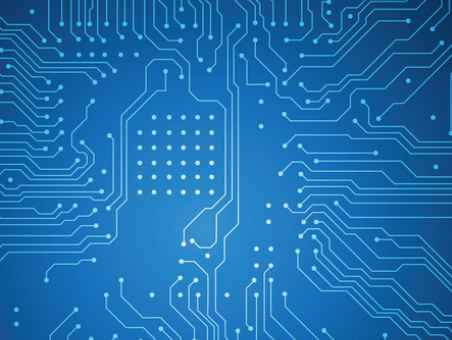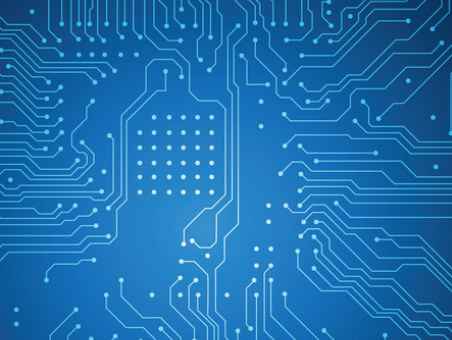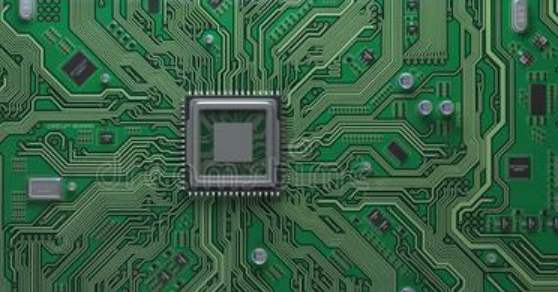
PCB electroplating process description
1, leaching acid 1, function and purpose
Remove the surface oxide, activate the surface, the general concentration is 5%, and some are kept at about 10%, mainly to prevent water from being brought into the tank resulting in unstable sulfuric acid content;
The acid leaching time should not be too long to prevent the oxidation of the board;

After a period of use, when the acid appears turbid or the copper content is too high, it should be replaced in time to prevent pollution of the electroplated copper cylinder and plate surface;
Grade C.P sulfuric acid should be used here.
Second, the whole plate electroplating copper
1. Function and Purpose:
Protect the thin chemical copper that has just been deposited, prevent the chemical copper from being corroded by acid after oxidation, and add it to a certain extent by electroplating;
The main components of the bath are copper sulfate and sulfuric acid, and the formula of high acid and low copper is adopted to ensure the uniform thickness distribution of the plate and the deep plating ability of deep holes during electroplating.
The content of sulfuric acid is mostly 180 g/l and 240 g/L;
The copper sulfate content is generally about 75 grams/liter, and a trace of chloride ions are added to the other tank, which is used as an auxiliary gloss agent and copper gloss agent to exert the luster effect;
The amount of copper polishing agent added or the amount of cylinder opening is generally 3-5ml/L, and the addition of copper polishing agent is generally supplemented by the method of thousand ampere-hours or according to the actual production plate effect;
2, the current calculation of the whole board plating is generally calculated by 2A/ square decimeter times the plating area on the board, for the whole board electricity, that is, the board length × board width ×2×2A/DM2; The temperature of the copper cylinder is maintained at room temperature, the general temperature does not exceed 32 degrees, and the most controlled is 22 degrees, so in the summer because the temperature is too high, the copper cylinder is recommended to install a cooling temperature control system.
3. Process maintenance
Daily according to thousands of hours to timely add copper polish, according to 100-150ml/KAH supplement; ? Check whether the filter pump works properly and there is no air leakage;
Use a clean wet rag to scrub the cathode conductive rod every 2-3 hours;
The content of copper sulfate (once/week), sulfuric acid (once/week) and chloride ion (twice/week) in copper cylinder should be analyzed regularly every week, and the content of light agent should be adjusted through Hall tank test, and relevant raw materials should be supplemented in time.
Every week to clean the anode conductive rod, the two ends of the tank electrical joint, timely supplement the anode copper ball in the titanium basket, with low current 0.2-0.5ASD electrolysis 6-8 hours;
The titanium basket bag of the anode should be checked every month for damage, and the damaged should be replaced in time; ? And check whether there is anode mud accumulated at the bottom of the anode titanium basket, if there should be cleaned up in time; ? Continuous filtration with carbon core for 6-8 hours, while low current electricity to remove impurities;
Every six months or so, according to the specific pollution status of the tank liquid, it is necessary to determine whether large-scale treatment (activated carbon powder); Replace the filter element of the filter pump every two weeks.
4, detailed processing procedures
Remove the anode, pour out the anode, clean the anode film on the anode surface, and then put it in the bucket packed with copper anode, coarser the copper corner surface with micro-etching agent until it is uniform pink, wash it dry, put it in the titanium basket, and put it in the acid tank for use;
The anode titanium basket and anode bag were soaked in 10% lye for 6-8 hours, washed dry, then soaked in 5% dilute sulfuric acid, washed dry for later use;
Transfer the tank liquid to the spare tank, add 1-3ml/L of 30% hydrogen peroxide, start heating, when the temperature increases to about 65 degrees, turn on the air and stir, hold the air and stir for 2-4 hours;
Turn off the air mixing, slowly dissolve the activated carbon powder into the tank at a rate of 3-5 g/l. After the solution is completely dissolved, open the air mixing, and keep the heat for 2-4 hours;
Turn off the air, stir, heat, let the activated carbon powder slowly precipitate to the bottom of the tank;
When the temperature drops to about 40 degrees, filter the tank liquid with 10um PP filter element and filter powder to clean the working tank, turn on the air to stir, put in the anode, hang in the electrolytic plate, electrolysis according to 0.2-0.5ASD current density low current 6-8 hours;
After laboratory analysis, adjust the contents of sulfuric acid, copper sulfate and chloride ion in the tank to the normal operating range, and add the light agent according to the test results of Hall tank;
#p# Page title #e#
After the color of the electrolytic plate surface is uniform, the electrolysis can be stopped, and then the electrolytic film is treated for 1-2 hours according to the current density of 1-1.5ASD, and a layer of uniformly dense black phosphorus film with good adhesion can be formed on the anode.
5, the anode copper ball contains 0.3-0.6% phosphorus, the main purpose is to reduce the anode dissolution efficiency, reduce the production of copper powder.
6, supplementary drugs, such as the addition of large amount such as copper sulfate, sulfuric acid, after adding low current electrolysis, adding sulfuric acid should pay attention to safety, when the addition of large amount (more than 10 liters) should be divided into several slow add, otherwise it will cause the temperature of the tank is too high, the decomposition of light agent is accelerated, and the pollution of the tank.
7, the addition of chloride ions should pay special attention to, because the chloride ion content is particularly low (30-90ppm), the addition must be used to weigh the measuring cylinder or measuring cup accurately before adding, 1ML hydrochloric acid containing chloride ions about 385ppm.
8. Calculation formula for drug addition:
Copper sulfate (unit: kg)=(75-X) x tank volume (L)/1000? Sulfuric acid (unit: liter)=(10%-X)g/L× tank volume (liter)
For more information about electroplating raw material (copper sulfate), please follow wechat (dghezhong), you can also visit the website of Hezhong Seiko (0769hz.com)......







